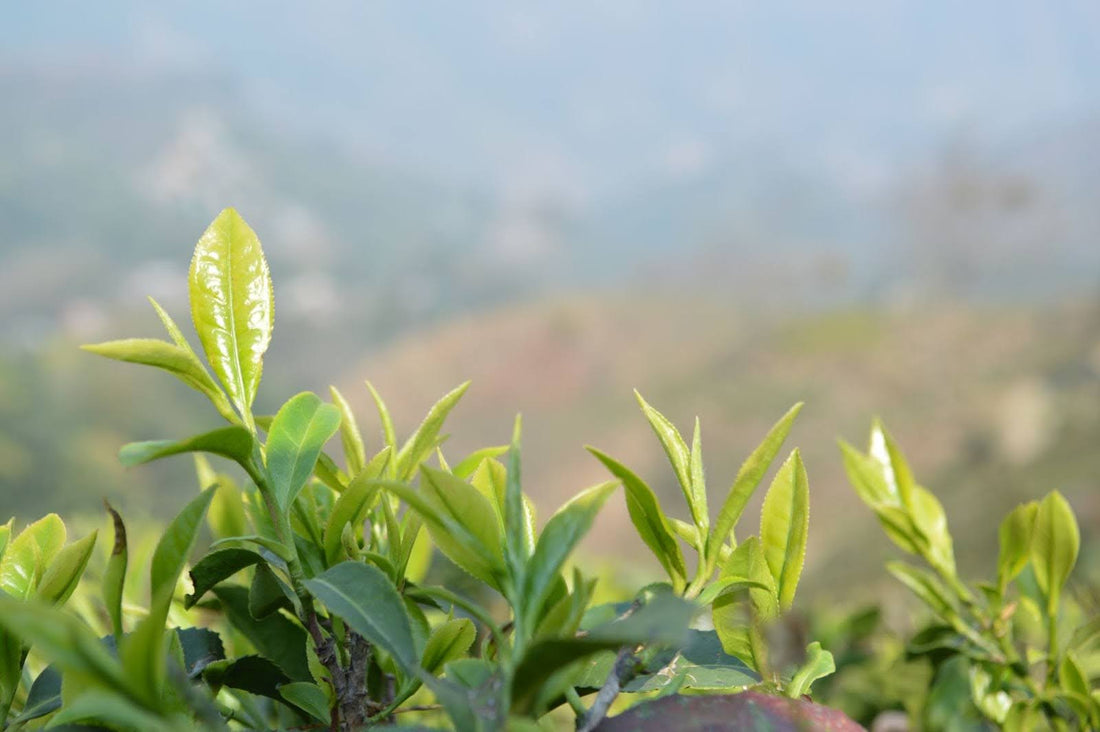Day 2: Chamong Tumsong Estate
REAL founder, David, has recently returned from a trip to India where he visited our partners and tea suppliers. He was previously scheduled to visit the mountain tea gardens of Northern India in late March 2020, but we all know how that story ended…
While he was there, David took a leaf out of Simon Reeve’s book, documenting his travels and learnings. Below is day 2 of David's travel diary.
---
I am staying for the first few nights on the Tumsong Tea Estate as a guest of Chamong Ltd, the largest grower of tea in Darjeeling. They own 13 tea gardens across the regions as well as 4 gardens in Assam and others elsewhere. They are a Fair Trade producer, with a real focus on producing the best quality teas in Darjeeling.

I was greeted by the charming and eloquent Mr Naresh Pareek, the General Manager of the estate. He has been the general manager here since 2014, and working in Darjeeling for much longer. Enormously knowledgeable, he will be my companion and guide for the next few days to explore the Chamong Tea Estates in this area.

Tumsong Estate is about 15 miles to the west of the city of Darjeeling. You access the estate, turning off the main Kurseong - Darjeeling road at Ghoom, and following a quiet, steep, windy and bumpy road heading west.

The estate itself is relatively small even by Darjeeling standards, covering 114 hectares of steep terrain. At the top of the estate you look out from 1800m across the wide valley, but in one swoop, the land drops 1000m to the bottom of the estate at around 800m. It must have been back-breaking work to clear the forest and steadily plant the estate with no mechanisation as Andrew and Ernest Wernicke did when they bought the land in the late 1860s. And no less challenging today for the pluckers as they climb the slopes to pick the tender first flush buds on the first day picking of the season.

I am staying in the guest bungalow, the original house that Andrew Wernicke built for his family in 1876. It is a beautiful, low slung, two storey house surrounded by verandas inviting you to spend long days lounging with a book looking out at the view. And what a spectacular view. Beyond the hedge at the bottom of the garden, you look down through the tea plantation to the valley bottom 600m below. But if you lift your eyes up, you spy, over the top of the first range of mountains, the majestic peak of Kanchenjunga, the third highest mountain in the world.

But there is unfortunately not a lot of time for lounging. Wake up is at 5.00am with the call of the early morning siren for the pluckers. Even if you wanted to hide away, the siren goes at 6.00am, 7.00am and 7.30am so no sleeping in! And we are out early into the tea plantation to watch the sunrise.
It is the first picking day of the season, so the first day of the first flush, or first growth. Darjeeling picking season is divided into 3 flushes: 1st, 2nd and Monsoon each with a short respite in between. The first flush lasts between about 30 and 45 days at Tumsong so goes from late March to end April/early May. The second flush then starts after around 10-15 days to allow the leaf to recover and enlarge.

In the first flush, it is just the first tip and 2 leaves that are picked as they emerge in spring, different for each estate, very late for Tumsong usually between 20th and 25th March. This is nipped out with the thumb and forefinger leaving the larger leaves to continue growing below. During the first flush, pluckers need to return to the same bush every 4-5 days so the new shoots don’t develop too quickly.


Tumsong produces approx 70 tonnes of tea per year of production, with only around 12-15 tonnes of exquisite first flush teas. There are around 6-7000 bushes per hectare of old planting, 12-15,000 of more recent planting, and up here in the mountains, a single bush only produces around 25-75g per bush per year, enough for 10-30 cups of tea. This is not a lot considering the extraordinary work that goes into growing, picking and processing the tea. In Assam, that figure is 3 times as much, and in the lowland tea growing regions, another two to three times more. But it is this slow growth that creates the extraordinary flavour.
About 1600 people live and work on the estate in accommodation provided by Tumsong. Of this, there are only around 250 employees which includes 180 full time pluckers. There are very few seasonal workers employed. As for the whole of Darjeeling, the vast majority are of Gorkha ethnic origin.

Accommodation is spread throughout the estate in small villages and hamlets, close to the zones that the pluckers will pick. Picking is generally 6 days per week with Sundays off, but the factory then works Sunday to process the tea from the previous day’s pick.
Picking is seasonal work, from late March to end October, from Holi to Diwali. But work doesn’t stop there. During the season the gardens need to be constantly weeded, as no herbicides are used, every 25-30 days. This is back breaking work, done with a sickle working up and down the slope. And out of season, the tea plants are pruned carefully to encourage growth, again, all done by hand.
Each tea plantation has its own factory. The tea leaf needs to begin its processing journey with an hour or so of being picked from the plant. And in terrain like this, that is tough even with a factory on site. These factories are small, in the case of Tumsong, being manned by 15 people, 3 at each stage of the process: withering, rolling, oxidation, baking and sorting.





But the fun really starts at the tasting the following morning. We are tasting our way through the previous year’s picks, at various points of the first and second flush season, and then comparing to the first day of the new season’s tea as it comes out of the process. And to ensure our palates are in best condition to taste the nuances that can occur from one day’s pick to the next, we have to start early. So at 6.30am we are in the tasting room with a line of tea bowls and a spitoon ready for us.
Tumsong first flush teas are delicate with a slight floral tinge. Compare this to Lingia and Marybong that I visit the following day that are more fruity/malty and spicy respectively. Very early in the season there is a distinct citric note to accompany the delicate lychee and melon that builds over the next few days pick. You also notice a distinct difference between picks from higher versus lower altitude. Fruitier flavours are more prevalent the higher you go up the hillside.
Moving to the second flush, Tumsong teas are smooth and caramelly with the delicate note of muscatel so telling of Darjeeling second flush teas. Compare this to the bold, hearty and heavily astringent notes of Assam teas that use the Camellia sinensis var. Assamica plant and are grown at much lower altitudes.


Tasting teas is quite an art, and one that I improve every time I do it. Here I am with the greatest experts so I am watching carefully to ensure I don’t embarrass myself. The tea is brewed with 3g of leaf for 125ml of water (close to the original 4 fluid ounces which makes 118ml). It is steeped for 3 minutes in the small spoutless tea pots and then decanted quickly into the tasting bowls, first into one to remove most of the leaf, and then into a second to take out any dregs that have escaped.
Tasting is done with a deep soup-style spoon. Our taste is largely influenced by aromas whether in the nose, or through the mouth. So take a big slurp to introduce as much air as possible as you imbibe the tea. Draw in a further breath through the tea when is it in your mouth, and then swill the tea around your mouth to properly release the flavour. Wait a second or two and then spit into the well placed spitoon next to you. When tasting 30, 40 or 50 teas in a session, swallowing the tea can give you quite a caffeine high after a while.
As we brew our teas at a much lower concentration than you would do with a normal cup of hot tea, then comes the second round of tasting. We drop the quantity of tea, reduce the temperature, and steep for about 10 minutes before pouring into the bowl. Here you get a very different experience of the tea. The lower temperature of steep leads to much less astringency coming through, allowing the fruit and floral notes to come through much more strongly. And the lower concentration of tea also allows you to pick up some of the much more delicate notes that you may miss at higher concentrations.




So with the tea tasting done for the morning, it is time for a “light” breakfast and to head to Lingia and Maybong, two other Chamong tea estates.


